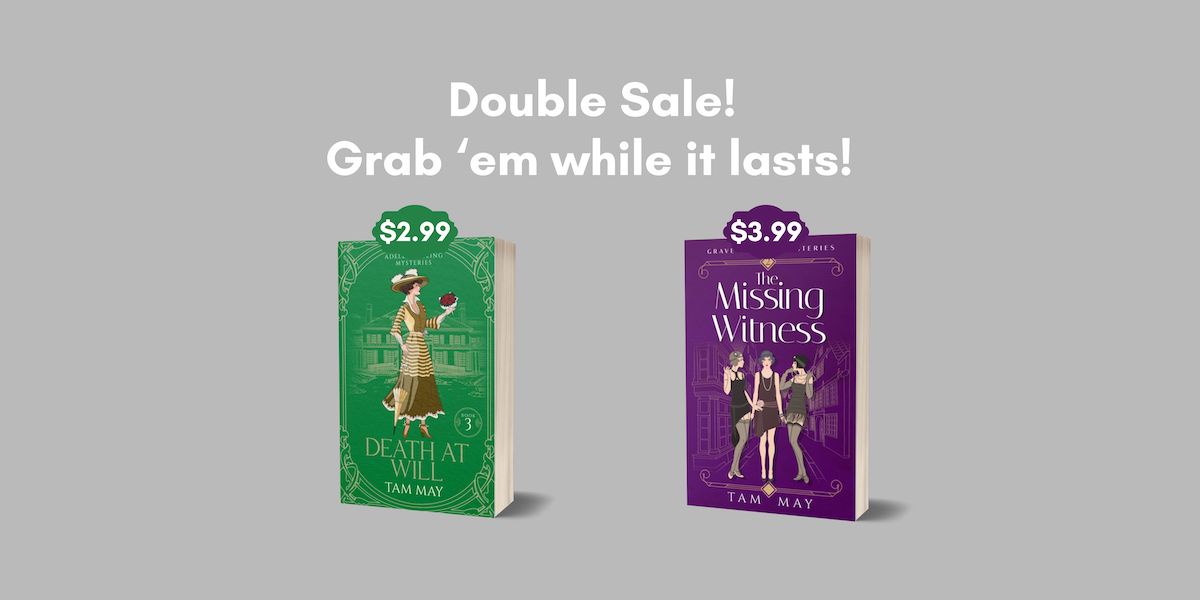We hear a lot about famous male sleuths like Sherlock Holmes, Charlie Chan, Father Brown, and, of course, Agatha Christie’s Hercule Poirot. They’ve become so famous that after Christie wrote the last Poirot book in 1975, The New York Times published Poirot’s obituary (if you don’t believe me, check this out).
But until recently, we haven’t heard much about famous female sleuths. That’s because, before Maisie Dodd and Jessica Fletcher, there just weren’t that many around. If called upon to name a famous amateur female sleuth, most people would probably think of Agatha Christie’s Jane Marple.
Marple often gets forgotten in the Christie canon because Poirot was more famous. Given a few quirks, he fits the stereotype of the famous detective while Miss Marple sort of slips through the cracks. Marple is anything but typical of what we might think of as an amateur detective — elderly (Christie’s books hint she’s in her seventies), hedgy, and mild-mannered, with a tendency to ramble on about the little world of her hometown, St. Mary Mead.
In one of his books on writing, crime author Lawrence Block confessed he likes Marple much more than Christie’s other famous detective, claiming she is more interesting and complex than Poirot.
I’m a huge fan of the Poirot series, largely after binge-watching the hit British series Poirot (side note: If you’re a fan of Christie and have never seen this series, I highly encourage you to get hold of it. David Suchet nails the Poirot character in looks and mannerisms and really makes the character come alive). I’ve read a few of the Marple books and, to be honest, Miss Marple didn’t impress me. Her wishy-washiness and tangents about St. Mary Mead just got on my nerves. Nevertheless, I could see what Block was talking about. Underneath the grandmotherly countenance and knitting needles lurks a very shrewd and observant mind.

Photo Credit: Margaret Rutherford as Jane Marple, Murder at the Gallop, 1963, taken 2 October 2006 by Mr. AEL: Mr. AEL/Flickr/CC BY NC ND 2.0
Actually, Marple wasn’t the first woman sleuth of advanced years. In fact, Christie took her inspiration for Marple from another not-so-young character who helped the police solve crimes. She was Anna Katharine Green’s Amelia Butterworth. Green was an American crime writer who wrote some years before the Golden Age of Crime Fiction. Green wrote three novels featuring Butterworth, with the first published in 1897. Butterworth is a Gilded Age creation, as, in spite of her age, she has the independent spirit and a gutsiness that would characterize the much younger generation of New Woman emerging at that time.
Interestingly, many film and TV versions of Miss Marple have tried to bring a little life into her beyond Christie’s rather limited vision of the elderly woman sleuth. Probably the most well-known of these was British actress Margaret Rutherford’s Marple. Although Rutherford’s Marple was always with her knitting needles, she looked more likely to poke somebody’s eyes out than make a sweater with them. Rutherford gives Marple the feminist “oomph” she needs, reminiscent of the earlier Butterworth. Although there were only four films made in the Marple series in the 1960s (and one of them was actually based on a Poirot book), they established the image of the lady sleuth we most often think of today — shrewd, tough, and taking no BS from anybody.
How about some more women sleuths with “oomph”? Check out my new Adele Gossling Mysteries, launching on April 30. The first three books are up for preorder and the first is only 99¢. You can find out more here.
If you love fun, engaging mysteries set in the past, sign up for my newsletter to receive a free book, plus news about upcoming releases, fun facts about women’s history and mystery, and more freebies! You can sign up here.

